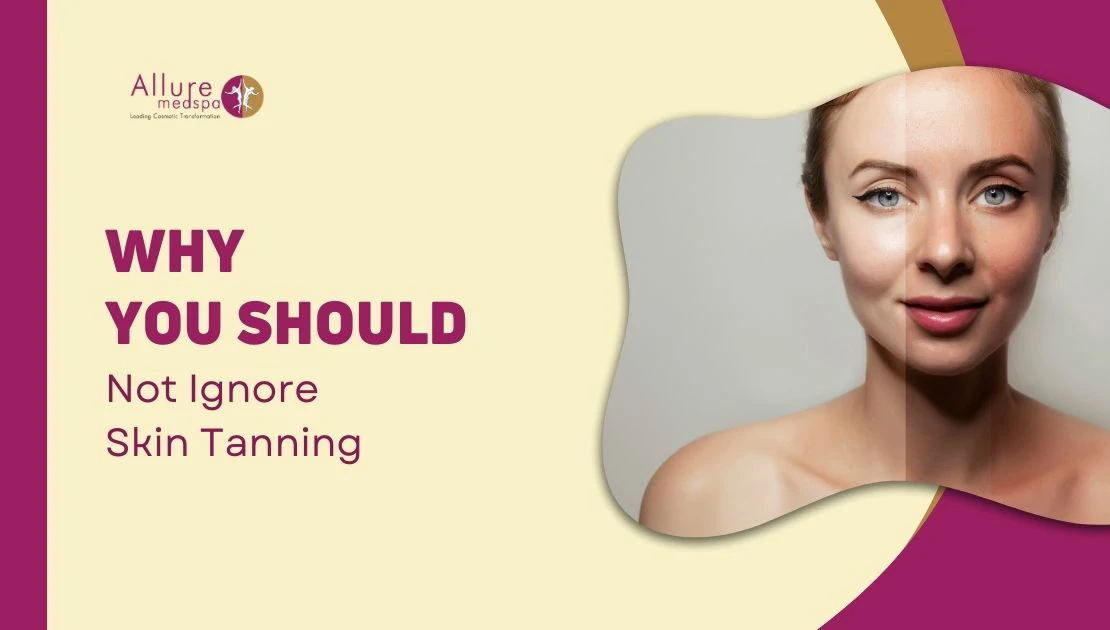The Dangers of Tanning: Effects on Your Skin & How to Protect It
Many people enjoy a “sun-kissed” glow, but tanning is actually a visible sign of skin damage. Prolonged ultraviolet (UV) exposure can accelerate aging, trigger hyperpigmentation, and raise skin cancer risk. Use this guide to learn what tanning is, the problems it causes, and safer alternatives.
Introduction
While sun tanning might seem appealing, it reflects your skin’s defense against UV damage. Our dermatology team explains why tanning is harmful, how it affects your skin, and the steps you can take to prevent it.
What is Tanning?
Tanning is skin darkening in response to UV exposure. Melanocytes produce melanin to help shield DNA from UV damage—more melanin leads to darker skin. However, excessive UV exposure harms skin structures.
- UV-A rays: Penetrate deeper layers, driving long-term damage like collagen breakdown, premature aging, and DNA mutations.
- UV-B rays: Affect the surface, causing sunburn and short-term darkening.
Although melanin absorbs some UV radiation, tanning signals injury—not health.
What Problems Can Tanning Cause?
1. Premature Aging (Fine Lines & Wrinkles)
UV-A damages collagen and elastin, reducing elasticity and firmness. Over time this leads to fine lines, wrinkles, laxity, freckles, and age spots—making skin look older than it is.
2. Hyperpigmentation & Uneven Skin Tone
Excess melanin accumulates in patches, creating brown spots, freckles, and an uneven complexion with dull texture.
3. Melasma: Patchy Skin Discoloration
Melasma presents as brown facial patches (forehead, cheeks) and is often triggered by prolonged sun exposure, hormonal shifts (e.g., pregnancy), and genetics. It’s stubborn and frequently requires professional care.
4. Sunburns & Skin Inflammation
Overexposure causes painful burns—redness, swelling, blistering, peeling, burning/itching—and weakens the barrier, increasing infection risk.
5. Skin Cancer Risks
- Basal Cell Carcinoma (BCC): Often appears as a shiny bump or non-healing spot.
- Squamous Cell Carcinoma (SCC): Scaly or crusted plaques; can spread if untreated.
- Melanoma: The most dangerous; arises from melanocytes and requires urgent evaluation.
Conclusion
Tanning equals damage. To maintain healthy skin, avoid tanning beds, limit sun exposure, wear protective clothing, and apply broad-spectrum SPF 30+ daily. If you’re concerned about tanning-related damage, speak with our dermatologist for customized care.
Call 8291863159 to book your consultation at Allure MedSpa.
Frequently Asked Questions (FAQs)
Q1. Is tanning ever safe?
Ans. No. Whether natural sunlight or tanning beds, UV exposure damages skin.
Q2. Can tanning be reversed?
Ans. Some damage can be minimized with chemical peels, lasers, and dermatologist-guided topical care.
Q3. Do tanning beds cause the same damage as the sun?
Ans. Yes. Tanning beds emit concentrated UV that accelerates aging and raises cancer risk.
Q4. How can I protect my skin from tanning?
Ans. Use broad-spectrum SPF 30+ daily, reapply every 2–3 hours outdoors, wear hats/clothing, and avoid peak sun.
Q5. Are there safe alternatives to tanning?
Ans. Yes. Self-tanning lotions, drops, and bronzers give a glow without UV exposure.











